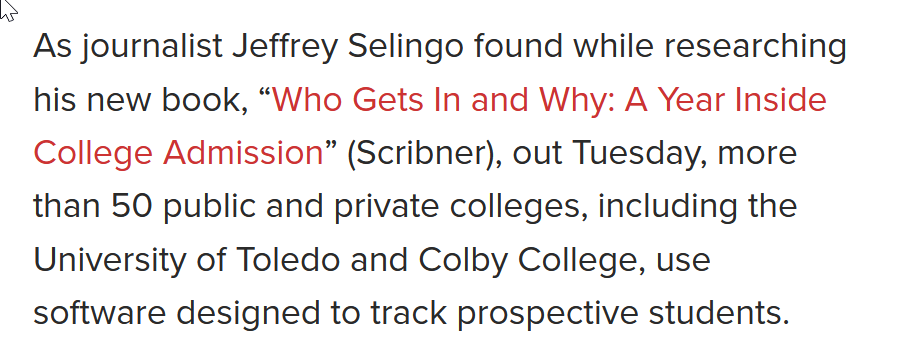
Thread: Here is a headline that's been making the rounds. Stop me if you've heard this from @DanRosensweig or any handful of others before: 

Thing is, as I've tweeted before, he might be right. And it wouldn't matter too much.
Here's why.
Here's why.
Let's assume our focus is on the effects on undergraduates only. That makes sense, of course, as they are the biggest segment of the post-secondary market. As you can see, full-time undergrads (purple, FT UG) make up over half of all enrollment. 

So here is what the market looks like with just undergrads. Just over 17M students. For reference, that's about the total population of The Netherlands. 

About 9% of all undergrads in the US go to Community Colleges in California, last time I looked. That's your interesting fact of the day.
But let's assume that the closure threat is dramatically greater at private universities. And that no one cares that much about for-profits.
But let's assume that the closure threat is dramatically greater at private universities. And that no one cares that much about for-profits.
That leaves private, not-for-profits, enrolling about 3M students. For argument's sake, let's say every single one of them closed. 3/17ths is about 17% of all undergraduate enrollment. Pretty bad, but probably less than you might have thought.
We know that's not going to happen. There are 1,859 four-year private institutions, but only 1,621 enroll undergrads. That means, hypothetically, that those 238 colleges with ug enrollment = 0 could close and we'd not lose any undergraduate enrollment.
That's not what we're talking about, of course. If you line up the 1,621 private, not-for-profit institutions, and arrange them from smallest to largest, and then (assuming small = vulnerable) cut off the smallest 25% of that group, guess how many students we're talking about?
Those 408 colleges (slightly more than 25% due to ties) collectively enroll 37,007 students. Or, about the population of Muskogee, Oklahoma, a town you've probably only heard of because of Merle Haggard.
37,000 is also the size of BYU. We'd hate to lose BYU, of course, but if it happened, it wouldn't upend higher education, although we would all mourn the loss of Cosmo.
That 37,000 is about 1.2% of private, not-for-profit post-secondary enrollment. And it's about 0.2% of all undergraduate enrollment.
Some caveats: This is 2019 IPEDS data. And it's quick, back-of-envelope calculations.
There would, of course, be real human cost to this: Displaced faculty, staff, students, and disrupted communities. I'm not discounting that.
There would, of course, be real human cost to this: Displaced faculty, staff, students, and disrupted communities. I'm not discounting that.
And if 25% of all private, not-for-profit colleges closed, they wouldn't necessarily be the smallest ones, of course. Some of the very small places are Jewish Yeshivas or Baptist Seminaries, for instance, which would survive because their funding is different.
So don't @ me.
So don't @ me.
The point is that a large number of very small institutions exist in our eco-system of higher education. And a few very large, well known public and private universities enroll the vast majority of those students. Look how many institutions you need to include to get to 50% 

Closures will happen, of course. They always do.
Don't let attention-grabbing headlines scare you or steal your focus. Just like a 10% admit rate doesn't mean any student has a 1-in-10 chance of admission, neither does a 25% closure rate mean you have a 1-in-4 chance of closing
Don't let attention-grabbing headlines scare you or steal your focus. Just like a 10% admit rate doesn't mean any student has a 1-in-10 chance of admission, neither does a 25% closure rate mean you have a 1-in-4 chance of closing
Unfortunately, there are a lot of pundits who--for profit, or ego, or publicity--have been spouting about college closings for a LONG time (I remember talk about it the early 80's when I started in admissions.)
Nostradamus was popular for a reason. But you don't have to listen.
Nostradamus was popular for a reason. But you don't have to listen.
Oh, and #EMTalk
• • •
Missing some Tweet in this thread? You can try to
force a refresh






